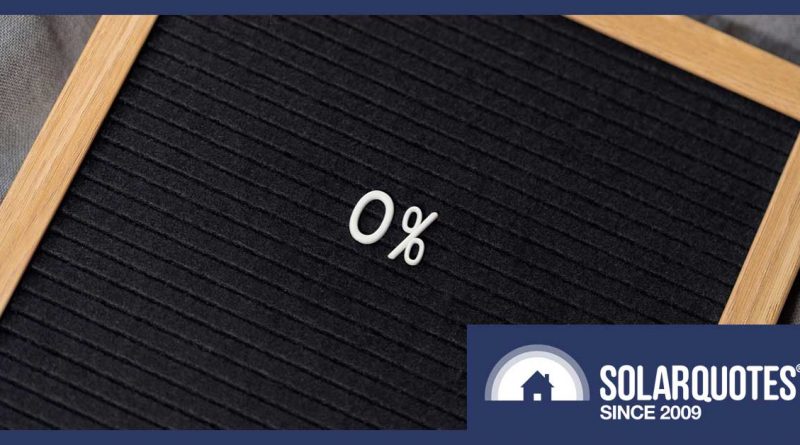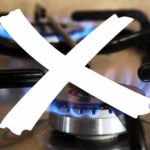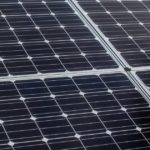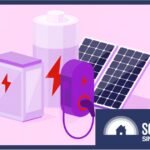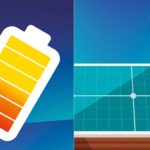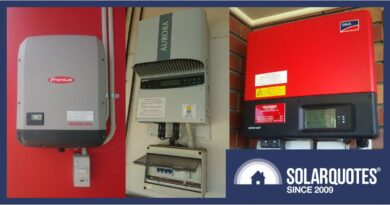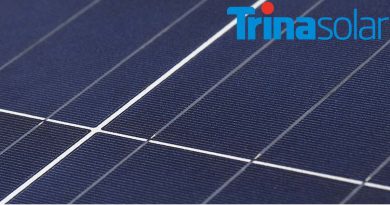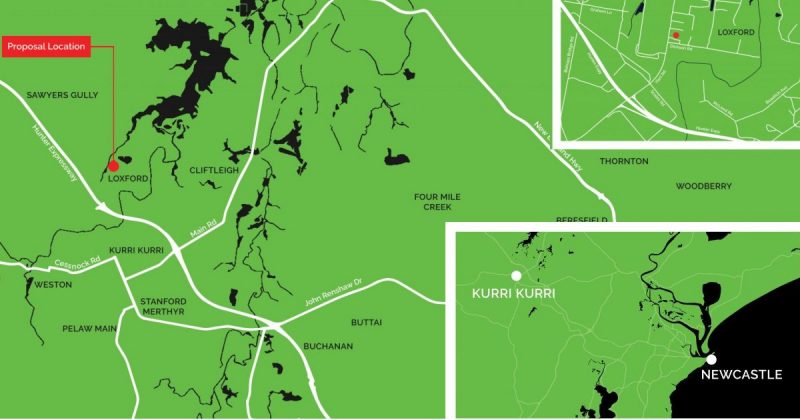ACT Sustainable Household Scheme: 0% Loans With Batshit Crazy Small Print
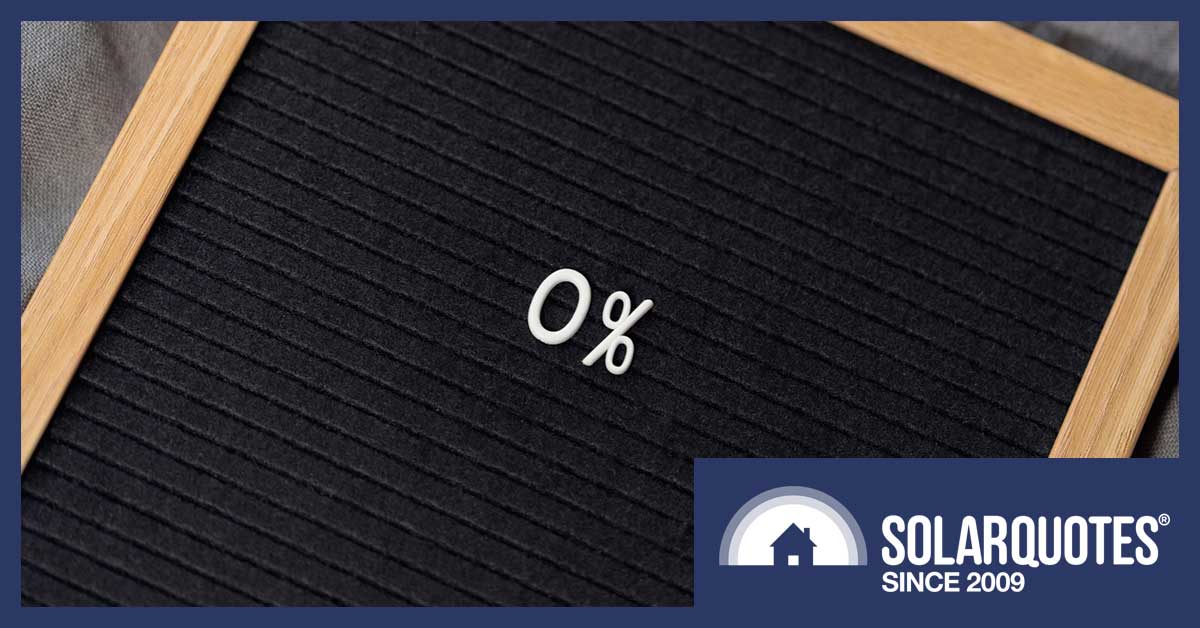

The ACT’s Sustainable Household Scheme will soon be in full operation. It makes zero-interest, zero-fee loans available to households for rooftop solar, batteries, electric car chargers and energy efficiency measures such as replacing gas appliances. In the future, it will be available for new and used electric vehicles.
The minimum loan amount is $2,000 with a maximum of $15,000 per household. It’s paid back over 10 years and loans can be taken out for the next five years or until the $150 million budgeted for the scheme runs out. Loans for households are available to property owners and renters with the owner’s permission.
I like the idea of the ACT Sustainable Household Scheme because most items covered easily pay for themselves within 10 years, and interest-free loans are an effective way to convince people to make these economically and environmentally sound purchases.
But, unfortunately, the scheme comes with some odd conditions and is inefficiently designed. This will result in the benefit it provides being sub-optimal.
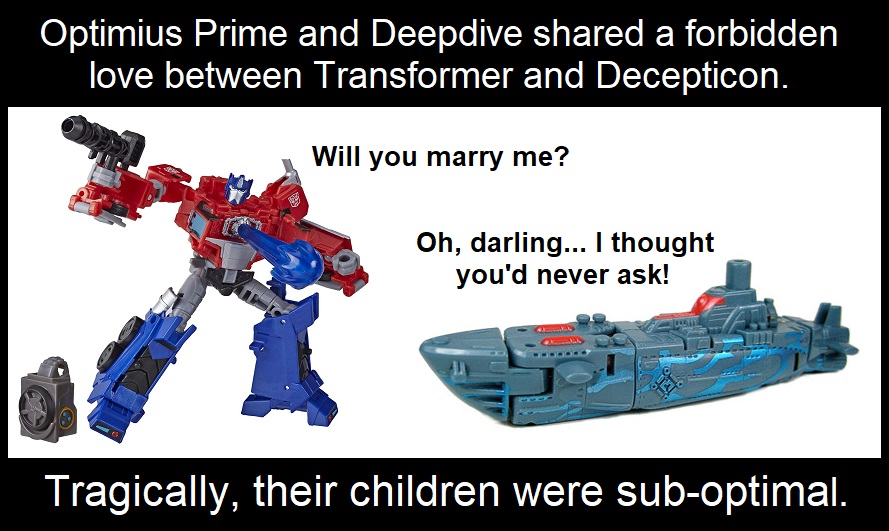

In this article I’ll cover:
- What you can purchase through the scheme.
- How to apply.
- What the ACT could have done better.
A pilot version of the ACT Sustainable Household Scheme is running and it’s poised to enter full operation. However, there may be delays because COVID is currently winning. If you apply now it may be fine or they may ask you to try again soon. The ACT says if you enter your details here you’ll be sent updates on what’s happening.
What Can I Borrow Money For?
There are three categories of “approved goods” that you can purchase.
Category A covers these three items:
- Rooftop solar power systems
- Home batteries
- Electric vehicle chargers
If you already have one or more of these, I see nothing in the guidelines or terms and conditions preventing the zero-interest loans from being used to buy and install new ones.
If your home is currently being built you can only borrow for Category A items.
Category B is for items that replace gas or energy inefficient appliances. Proof of removal of old appliances will be required. The three products types it covers are:
- Reverse cycle air conditioners — These can both cool and heat homes.
- Heat pump hot water systems — These are the most energy-efficient type of hot water system.
- Efficient electric stovetops — Induction stovetops are the most efficient, but hopefully this will include standard electric stove tops as they are almost equal in efficiency1. While the guidelines say “stovetops”, hopefully it also allows for the replacement of gas ovens.
If you want one of the items above but don’t have an old system to remove, you may have a problem. Hopefully, they will intelligently consider your situation and make exceptions where appropriate. This will prevent people from installing broken down old appliances so they can be “replaced”.
Category C is for Electric Vehicles (EVs) and isn’t available yet. At some point, it will be possible to use zero-interest loans to buy or contribute towards buying…
- New and used vehicles, including grey imports and private sales, that emit zero emissions.
The vehicle must emit no emissions when in use. In practice, this means fully electric cars and not plug-in hybrids. But technically it allows hydrogen fuel cell cars — which aren’t really available — and rubber band powered cars, which you can purchase from North Korean Motors.
The total cost of the vehicle must be less than the luxury car tax threshold for fuel-efficient vehicles, which is currently $79,659. This condition seems pointless because we benefit from rich bastards driving electric cars as well as poor bastards. But it can make sense to focus subsidies on EVs affordable to more than a small portion of the population. On the other hand, every additional rule and condition adds to the cost of checking applications and this deadweight loss may eliminate any benefit.
More Approved Goods In Future
New items will be considered over time and may be added to the ACT Sustainable Household Scheme. It gets cold during Canberra winters, so adding insulation seems a no-brainer.
How Much Can Be Borrowed?
Up to $15,000 can be borrowed per participant in the Sustainable Household Scheme. This is across the three categories and can be spread out over the five years loans will be available. For example, you could borrow $3,000 to buy a reverse cycle air conditioner this year and next year borrow $10,000 to install a large, high quality, solar system2.
The “minimum loan application value” is $2,000. My interpretation of this is the initial loan must be for at least $2,000 and each subsequent loan must also be for a minimum of $2,000.
If you wanted to borrow more than $15,000 — say you wanted to buy a $45,000 electric car3 — you could borrow up to $15,000 at zero interest through the scheme but would have to pay whatever interest the loan provider normally charges on any amount borrowed above that.
The loan is paid back over 10 years. For a $15,000 loan, this will be a monthly payment of $125. You can pay more than the monthly minimum and there’s no penalty for paying early.

While low-interest rates can contribute to financial market destabilization, unless people start doing something stupid — like investing large sums of money in strings of ones and zeros spat out by computer programs — I think we’re good. (Image: Pigwiththefaceofaboy)
Who Can Borrow?
Exactly who can take out a loan gets a little complicated. Each participant can borrow up to $15,000 but a participant is defined as:
- An ACT household for category A and B loans. The borrower must be the owner of the property or a renter who has the owner’s permission.
- A holder of an ACT driver’s licence for category C loans for EVs.
Now if you’re thinking — as I would — that you can borrow $15,000 for the home while your husband4 can borrow $15,000 for a car — but that does not appear to be allowed. The guidelines state:
“Each participant may borrow a maximum of $15,000 over the life of the Sustainable Household Scheme. This is a cumulative maximum across eligible product categories A, B and C.”
This suggests if a household has borrowed $7,000 to get an air conditioner and heat pump hot water system, anyone in that household will only be able to get a zero-interest loan of up to $8,000 for an electric vehicle. Otherwise, the guidelines would probably just say, “Hey, you can borrow another $15,000 interest-free for an EV.”
The guidelines do say they recognize there can be multiple people in a household who want to borrow money for an EV and will consider complex arrangements on a case-by-case basis. To me it sounds like they’re making work for themselves. I would have gone for an arrangement that doesn’t require an administrator’s decision.
While only available for households at the moment, non-profit organizations will be able to use the scheme in the future.
Eligibility For Household Loans — Categories A & B
A zero-interest loan for household items — categories A & B — has these requirements:
- It must be for a house or unit owned by the borrower or rented by a borrower who has full permission from the owner to have the items installed.
- The house or unit must be in the ACT. (Note Jervis Bay Territory is not part of the ACT.5)
- The Unimproved Value of the property in the 2020/21 financial year must be under $750,000 for free-standing homes and under $200,000 for multistory apartments. You can find the Unimproved Value (UV) on rates notices. It’s the value of the land without buildings or improvements, so not many people will miss out on account of this restriction.
I don’t know why they bother having a limit on the Unimproved Value of properties. It will eliminate very few people and everyone benefits if the rich are more energy efficient. We may even benefit more since the rich tend to use the most energy. I can only guess they’re fond of pretty red tape in Canberra.
If you are building a new home you can only borrow for Category A items.
Eligibility For EV Loans — Category C
Borrowing for an electric vehicle has the following requirements:
- Must be a resident of the ACT as shown by a rates notice or utility bill.
- Have an ACT driver’s licence.
- The vehicle must produce no emissions when in use. In practice, this means an all-electric car and not a plug-in hybrid.
- The total cost of the vehicle must be less than the luxury car tax threshold for fuel-efficient vehicles, which is $79,659 this financial year.
I see nothing that says a loan can’t be used for a bicycle or e-bike, since they are vehicles that produce no emissions when in use. If you want a zero-interest loan to get a $2,000+ bicycle, screw you, that’s not what it’s for. You can get a good bicycle for $300. But good quality e-bikes tend to start around the minimum loan value of $2,000. So it may be possible to use a zero-interest loan to get one of them. But don’t blame me if you get knocked back.
There Is A Credit Check
As with any loan, you must pass a credit check. This is because everyone who loans money prefers that it goes to people likely to pay it back. If you have difficulty making payments they may alter the deal to extend the period of the loan.
[embedded content]
But they’re not likely to cut you any more breaks than they have to and if you end up too far down the financial drain things can get very nasty. So don’t get a Sustainable Households zero-interest loan thinking your creditor will go easier on you than with a normal loan.
If you get a loan through the scheme that’s entirely zero interest there will normally be no fees. But if your payments fall in arrears there can be what the guidelines call “modest” fees. But if you’re having trouble paying back a loan, I don’t think any fee will look “modest”.
Can Be Used With Other Subsidies
You can use the loan with other subsidies available in the ACT. For example, a homeowner could use the ACT battery subsidy and then cover the remaining cost with a zero-interest loan.
The Loans Will Be Through Brighte
All loans for the Sustainable Households Scheme will be through Brighte — a finance company specializing in lending money for rooftop solar power, energy storage, and energy efficiency items. It looks like they will be the only lender available for the duration of the scheme. Loans will only be available for products from Brighte’s approved suppliers.
This setup is unfortunate because it reduces competition. This will lead to people in the ACT receiving less benefit from the scheme than they otherwise would.
There Will Be $150 Million In The Pot
The scheme will operate for five years or until the budgeted $150 million runs out. The ACT has a AAA credit rating and, at the moment, can borrow money for basically nothing. This makes a zero-interest loan scheme cheap to run if — and only if — administration costs are kept low.
There are approximately 215,000 households in the ACT. If $150 million is the total amount that can be loaned the average comes to around $700 per household. But if the $150 million is instead the total cost of running the program, it should be far more per household. The exact amount will depend on how efficiently the Sustainable Household Scheme is run and what happens with interest rates.
Is A Sustainable Household Scheme Loan Worth It?
From the point of view of households, the loans can make excellent financial sense. For most items in categories A and B the savings on energy bills will easily exceed the monthly payments on a zero-interest loan. This is especially true for rooftop solar.
Home batteries are an exception. Because the ACT has the lowest electricity prices in Australia, it’s the location where home batteries have the lowest return. But if your nighttime electricity consumption is high enough and you make use of the ACT battery subsidy, then — along with the advantage of having backup power — you may consider a battery worthwhile.
If instead of taking a zero-interest loan, you borrowed $15,000 at 5% interest with no fees, at the end of a 10 year loan period you would have spent a total of $19,092 paying it off. This is $4,092 more than a zero-interest loan, so a zero-interest loan can clearly be worthwhile.
How To Apply — Household Upgrades
The guidelines outline how to apply for a loan for household goods in categories A and B. The process is:
- Step 1: Go to the ACT Sustainable Household Scheme for information and decide what you want.
- Step 2: Get quotes from approved suppliers. “Approved” means companies Brighte has loan arrangements with. It’s not an approval from the ACT Government.
- Step 3: Decide who to go with and complete a loan application with Brighte.
- Step 4: If the loan approval goes ahead, get the item installed.
Warning: Just because an installer is on Brighte’s list of approved suppliers doesn’t mean they do good work. When it comes to solar installers, there are some with a loan arrangement with Brighte that do excellent work and there are those I wouldn’t touch with a 10 foot pole while wearing a hazmat suit.
If you are looking to get rooftop solar panels with a zero-interest loan I recommend getting your quotes through us. Finn puts a lot of work into making sure we only refer you to people who do high-quality installations.
Can’t Apply For Electric Vehicles Yet
It’s not possible to get a zero-interest loan for an EV yet, so there are no guidelines on how to apply.
Sustainable Household Scheme Drawbacks
There are several drawbacks to the scheme. These include:
- You can’t dispose of items purchased through the scheme while they’re in warranty.
- You must allow inspections.
- You must agree to participate in research.
- You must monitor an ACT website for updates on the Sustainable Household Scheme.
- It will be assumed you automatically and instantly agree with any changes in terms and conditions.
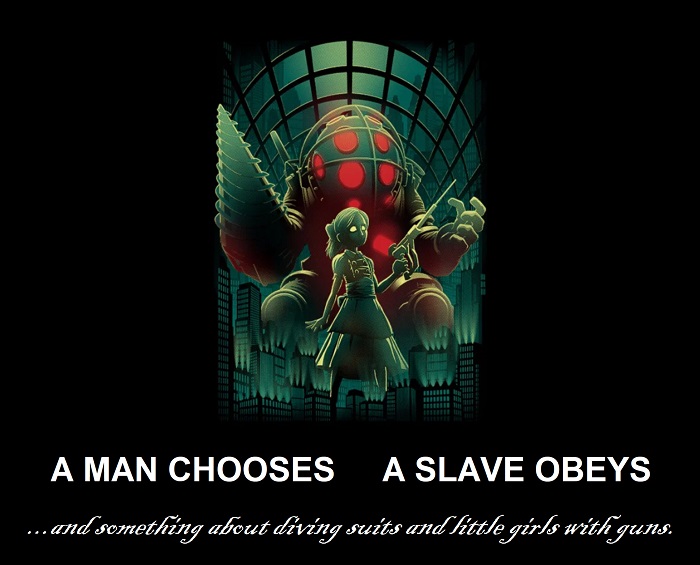

You Can’t Throw Items Out
Anything acquired through the scheme installed on or in your home cannot be removed, sold, or disposed of. Not until all warranties have expired. There are exceptions for…
- Repair
- Safety, and…
- Written permission from the ACT Government
Because you don’t have full control over the item, you don’t really own it. But if something goes wrong, the ACT Government says it’s your responsibility to sort it out, not theirs.
There are solar panels with 30 year warranties, so you could potentially be stuck with a system on your roof that you’d like to replace with something more advanced for a very long time.6 In practice, I doubt anyone will care after the loan has been paid off, but it’s dumb to have a blanket condition like that.
Note you’re not allowed to use the items in a way that will void the warranty. You’re also not allowed to let unqualified people service them, including yourself.
You Must Allow Inspections
According to the terms and conditions, for household items purchased through the Sustainable Household Scheme, you must permit…
“…the ACT Government and its Loans Provider to enter your property…”
You wouldn’t think they’d all fit, would you? After all, there are 25 people in the ACT Assembly and god knows how many in Brighte. So you’d better be damn sure you have a home suitable for entertaining.
The reason why you have to let them access your private areas is so they can perform inspections. This includes any inspections of the approved goods they deem necessary, provided they give you reasonable notice. So at least they have to let you know when they’re coming.
You Must Let Them Watch
You must allow any installed goods to be part of any trials or research projects the ACT Government wants. This can include — but is not limited to — remote monitoring, interviews, and questionnaires.
This seems unnecessary to me. If you simply ask participants if they want to participate in a trial or research, many of them are going to say yes. Requiring it of people just seems unnecessary and, well, evil. I’ve been told I’m not allowed to hide clauses in terms and conditions allowing me to perform scientific research on people whenever I feel like it, so I don’t see why the ACT Government gets to.
You Must Stay Informed
The ACT Government wants people to understand the terms and conditions, but I don’t think their expectations are realistic. Here’s what section 1.3 of the terms and conditions says…


I’m writing an article on their scheme and they’re lucky I read this. If they think the average person applying for a zero-interest loan will read through all the terms and conditions, they’re dreaming.
An ACT homeowner might think that after successfully borrowing two and a half thousand dollars interest-free to buy a reverse cycle air conditioner, agreeing to have someone inspect it, and agreeing to take part in any research they ask, all they have to do then is worry about is making the payments. But wait, there’s still more! You can’t just sit on your arse and enjoy your approved product. Look at what the terms and conditions say you must do:

 So the democratically elected representatives of the ACT will require people to monitor a website and comply with conditions that appear on it. I have to say, that is some high-grade bullshit. The purpose of the ACT Government is to serve the electorate’s interests, not be a bush week version of Facebook.
So the democratically elected representatives of the ACT will require people to monitor a website and comply with conditions that appear on it. I have to say, that is some high-grade bullshit. The purpose of the ACT Government is to serve the electorate’s interests, not be a bush week version of Facebook.
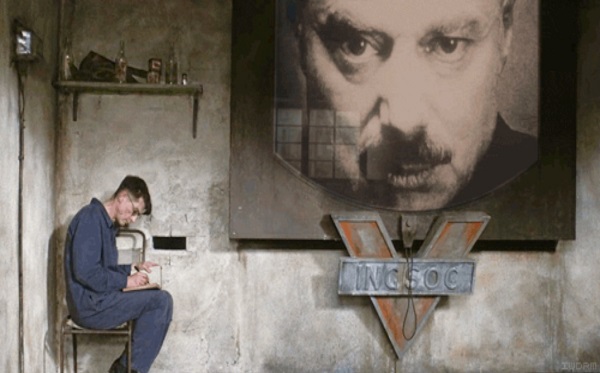
At least in George Orwell’s 1984, Big Brother went through the effort of watching you. The ACT Government expects you to watch them so you can jump to it if they change the terms and conditions.
If there is a change in the terms and conditions that people need to be informed of, then the ACT Government can make the goddamned effort to inform them. At the same time, they can bloody well apologize for not getting it right in the first place.
It’s bad enough when private companies pull this shit, but at least people can (usually) tell them to go jump. They (usually) don’t have the power over your lives a government does.


What the hell? No! That is not what the word ‘agreed’ means! You fucking morons!
It’s A Poorly Designed Scheme
In Australia, for better or worse, we get most of our physical stuff from markets.7 Those who sell in markets compete on price and quality and — trust me — when it comes to solar and batteries, you want them competing on quality. This arrangement is good because, as long as people can reasonably judge the quality of what they’re getting, market forces will work to provide them with what they want. This is because sellers will compete to provide it.
The Sustainable Homes zero-interest loans scheme is badly designed because it reduces competition. The only sellers you can use are ones available through Brighte. While Brighte doesn’t seem picky about who they work with, it still limits competition, which is bad for ACT residents.
The ACT government should have just run the scheme themselves8. Then they could have made it available to all suppliers in the ACT and not reduced competition. If there was a supplier they wanted to exclude for shoddy work or dodgy behaviour, they could have made that decision themselves. But by having an outside organization run it, they have relinquished that power9.
I presume the ACT Government brought in an outside company so politicians would have cover if something went wrong. But this is a dangerous habit to get into. When governments lose experience in doing things, they lose the ability to act quickly in an emergency without relying on private companies.
The people who designed the Sustainable Household Scheme were, no doubt, working under constraints I’m not aware of and probably did the best they could given the instructions handed to them by politicians. But it’s still shameful this is the best the ACT — our city on a hill — could come up with. I know Canberra is actually a city next to some hills, but that doesn’t change my point. We expect better from the place the entire nation turns its eyes towards when in need of inspiration, guidance, or a really good laugh.
ACT Sustainable Household Scheme End Rant
It’s a pity the ACT scheme is poorly designed and comes with unnecessary and crazy conditions. Just because the ACT is doing something good — helping people make environmentally beneficial purchases — doesn’t mean it’s okay to do it stupidly.
Footnotes
- According to one study (table III.19) the efficiency of stovetops are 73.6% for induction, 71.9% for electric coil elements, 69.7% for smooth electric elements (most electric stoves sold in Australia), and 43.9% for gas. ↩
- But you’d be better off doing it the other way around and get the solar system first, since that will save you more money. Or just get both at the same time. The savings on your electricity bills from solar panels should mean you’ll have no problem making payments. ↩
- The MG ZS EV is among the cheapest new electric cars in Australia – about $45,000 on road. It has a 44 kilowatt-hour battery pack and appears to have over 240km of real-world range. The BYD e6 is cheaper again at around $43,000, has a 70kW battery and reportedly has over 400 kilometre range ↩
- Not that I have a husband. But it’s not that I couldn’t have a husband if I wanted to. (He’d just have to be pretty damn femme, that’s all.) ↩
- But they were planning to build a nuclear power station at Jervis Bay in the 70s, so if you ask nicely they may let you install one of them. ↩
- Currently, I’m working on the future solar panels that will be made out of black holes. This is because they capture 99.999999999999999999999999999999999999999999% of light falling on them. (See Stephen Hawking for why it’s not 100%.) The theory is sound. All we have to do is work out how to extract energy from them and overcome their tendency to destroy the earth. ↩
- Some people disapprove of this, but there are simply no better solutions than markets for solving some classes of an optimisation problem. But, of course, just because we suffer from this constraint doesn’t mean we have to be a dick about it. ↩
- They still could have brought in outside expertise to help. ↩
- If a company’s work is so poor people shouldn’t use them. it would make sense to handle it at the level of the entire ACT, rather than just through the Sustainable Homes loan scheme. But the scheme is where lousy installers are likely to come to light. ↩
Original Source: https://www.solarquotes.com.au/blog/act-sustainable-household-scheme/

